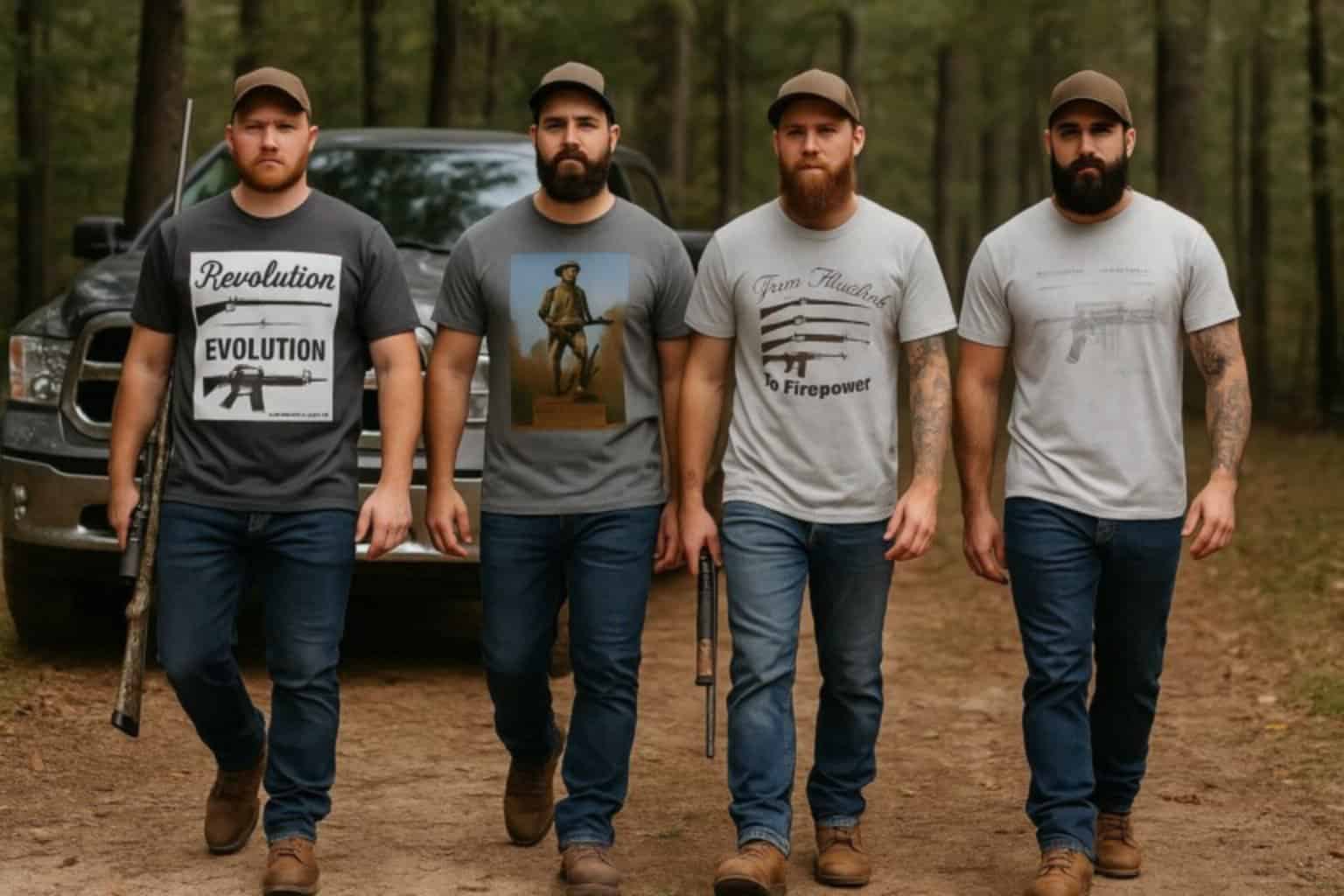
Introduction
The American Civil War was a proving ground for innovation, a time when ingenuity was not just valued but necessary for survival. Amid the many breakthroughs in weaponry, the Gallager Carbine emerged as an important cavalry firearm, offering a glimpse into the future of breech-loading arms. Though overshadowed by repeating rifles like the Spencer, the Gallager was widely issued to Union cavalry units and played a significant role in mounted engagements.
This is the story of the Gallager Carbine, its origins, design, field performance, and lasting impact on military firearms.
Mahlon J. Gallager and the Birth of a New Breechloader
Mahlon J. Gallager remains an enigmatic figure, but what is known is that he was an inventive mind working during a transformative era in firearms development. In the late 1850s, as military planners sought alternatives to slow-loading muzzleloaders, Gallager devised a breech-loading carbine that streamlined the reloading process while maintaining reliability.
On July 17, 1860, Gallager was awarded U.S. Patent No. 29,157, covering his novel carbine design. Unlike the earlier Sharps or Burnside breechloaders, his system used a pivoting breech mechanism, where a lever near the trigger released the barrel to tilt forward, allowing the user to insert a cartridge. This made reloading faster than traditional muzzleloaders, a key advantage for cavalry troopers who needed to fire on the move.
Gallager’s design soon attracted the attention of the Philadelphia-based Richardson & Overman Company, a firm with the industrial capacity to manufacture the new weapon at scale. Though Gallager himself does not appear to have been directly involved in production, Richardson & Overman secured contracts with the U.S. government, and the Gallager Carbine was officially adopted for Union cavalry units.
Design and Technical Characteristics of the Gallager Carbine
The Gallager Carbine was a breech-loading, single-shot percussion firearm designed primarily for Union cavalry forces. Its mechanical simplicity made it easier to use than traditional muzzle-loaders, and its compact design suited mounted soldiers. The key design elements included:
- Overall Length: 39.5 inches
- Barrel Length: 22.25 inches
- Weight: ~8 pounds
- Caliber: .50 (initially a paper cartridge, later modified for metallic cartridges)
- Action: Hinged breechblock operated by a lever
- Ignition System: Percussion cap (early models) / Rimfire conversion (.50-70 Gov’t post-war)
- Muzzle Velocity: ~1,000 fps (original .50 caliber load)
- Effective Range: 200-300 yards
Breech-Loading System
The Gallager’s hinged breech system was designed for quick reloads. By depressing the operating lever, the barrel tilted forward, exposing the breech. The soldier inserted a self-contained paper cartridge, which was then ignited by an external percussion cap upon firing. Unlike the Burnside Carbine, which used a proprietary brass cartridge, the Gallager still required manual extraction, a significant drawback in combat.

Ammunition and the 1865 Rimfire Conversion
The earliest Gallager carbines fired .50 caliber paper cartridges with a separate percussion cap for ignition. These cartridges, while effective, suffered from moisture sensitivity and occasional extraction failures, as spent paper cases sometimes became lodged in the chamber.
By 1865, as metallic cartridge technology improved, the U.S. Army ordered 5,000 Gallagers converted to fire a rimfire metallic cartridge. Contrary to some accounts suggesting a .56-52 Spencer conversion, these were actually modified to chamber the .50-70 Government round. The introduction of self-contained brass cartridges significantly improved reliability but came too late to see widespread Civil War use.
Combat Usage: The Gallager in the Civil War
Deployment in Union Cavalry Regiments
Between 1861 and 1865, the U.S. Ordnance Department procured approximately 22,728 Gallager Carbines, with 17,728 issued to frontline troops. These carbines were widely distributed among cavalry regiments, including:
- 5th Pennsylvania Cavalry
- 7th Ohio Cavalry
- 7th Iowa Cavalry
- 8th Kansas Cavalry
- 21st Pennsylvania Cavalry
- 4th Tennessee Cavalry
- 2nd Tennessee Cavalry
- 9th Tennessee Cavalry
- 2nd Arkansas Cavalry
- 6th Indiana Cavalry
- 16th Kansas Cavalry
- 4th Missouri Cavalry
While records of its battlefield performance are somewhat scarce, firsthand accounts indicate that cavalry troopers appreciated the faster reload time compared to muzzle-loaders but found the weapon hampered by extraction issues. This was particularly problematic in rapid-fire engagements, where spent cases sometimes stuck in the chamber, requiring soldiers to use knives or ramrods to clear them.
Performance in Battle
The Gallager saw action in various Western Theater campaigns, including skirmishes in Missouri, Kansas, and Tennessee. It was used extensively in raiding operations, where cavalry forces needed a dependable firearm that could be fired quickly from horseback.
However, by 1864-1865, as repeating rifles like the Spencer became more widely available, Gallager-armed units often sought upgrades. The Spencer’s seven-round magazine and self-contained rimfire ammunition provided a distinct advantage over the single-shot Gallager, leading to a gradual decline in its frontline use.
Advantages and Drawbacks of the Gallager Carbine
Strengths
✅ Faster Loading: The breech-loading design allowed for 6-8 shots per minute, faster than muzzle-loaders.
✅ Compact and Lightweight: At 8 pounds, it was well-balanced for cavalry use.
✅ Rugged Construction: The forged steel receiver and barrel provided good durability.
Weaknesses
❌ Extraction Issues: Spent cartridges were difficult to remove, causing delays in combat.
❌ Single-Shot Limitation: By 1863-64, repeating rifles (Spencer, Henry) outclassed it.
❌ Paper Cartridge Vulnerability: Wet conditions could render the ammunition useless.
Post-War Use and Legacy
After the Civil War, many surplus Gallager Carbines were sold to private individuals and state militias. Some were later converted to centerfire cartridges, including .50-70 Government, and remained in limited use through the 1870s.
Despite its shortcomings, the Gallager Carbine was a critical step in the evolution of breech-loading arms. It demonstrated the benefits of cartridge-based reloading, paving the way for later single-shot and repeating rifles that defined American military firearms for decades to come.
Final Thoughts
The Gallager Carbine is a fascinating relic of the Civil War era—an innovative yet imperfect firearm that represents the rapid technological progress of its time. While it was ultimately overshadowed by more advanced designs, its widespread use in Union cavalry regiments cements its place in history.
For collectors and historians, the Gallager remains a prized piece, offering insight into the transition from muzzle-loading muskets to modern firearms. Its role in the American Civil War, though sometimes overlooked, is a testament to the ingenuity and resourcefulness of 19th-century arms designers.
Read more about this weapon here:
The Smithsonian Institute has one of these as part of their collection which can be viewed here.
If you know of any forums or sites that should be referenced on this listing, please let us know here.






